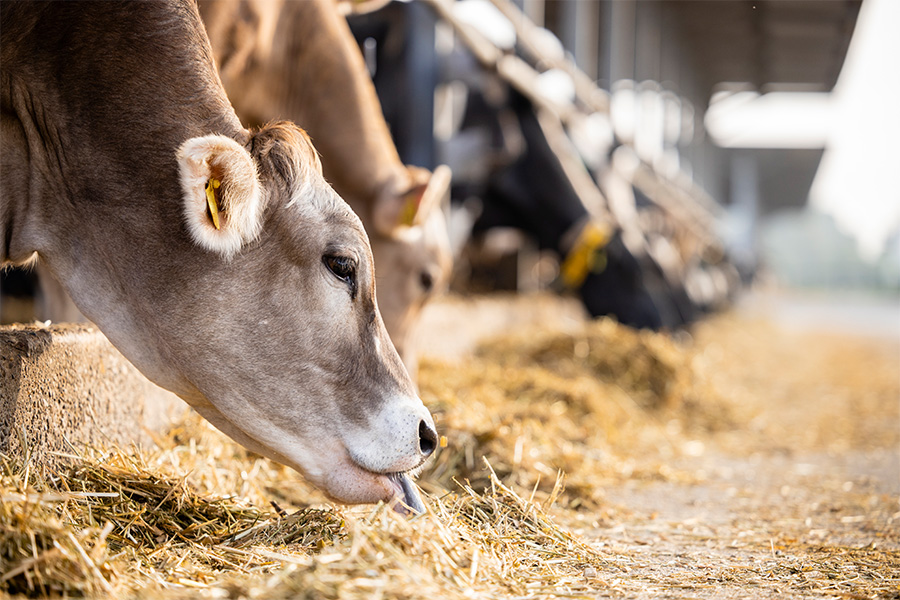Animal and Dairy Science
-

The quality of an egg involves both the exterior and interior qualities of the egg. Egg quality includes the cleanliness of the shell, soundness of the shell, thickness of the albumen, and color of the yolk. Good egg quality is critical to maintaining the hatching potential of eggs, as improper handling or storage of eggs will reduce the ability of the eggs to hatch and produce good quality chicks. For table eggs, improper handling and storage of eggs will reduce the grade of the eggs and could pose a potential health hazard.
Claudia Dunkley
|
-

The Southeast U.S. is susceptible to hurricanes and tropical storms every year. Hurricane season occurs from June 1 through November 30, and these storms are normally forecast several days in advance. Tornadoes, ice storms, thunderstorms, or straight-line winds—potentially damaging winds produced by thunderstorms—are rarely forecast with enough notice to prepare other than to hopefully warn employees. Storms disrupt operations and have the potential to cause injury to people and livestock and devastate facilities and the landscape. While there is nothing that can be done to prevent the impact of a storm, producers should have an emergency plan that safeguards family, employees, livestock, and equipment. The emergency plan should also address how to safely manage the damage after a storm. Emergency plans should include one-day, three-day, and seven-day or longer responses during which power outages, access to vendors, and normal operations may be very limited. Hurricanes that occurred in 2017 and 2018 caused devastating damage in some areas that took weeks to restore power because of the extensive damage to distribution lines. This bulletin will provide information producers can use to develop an emergency preparedness plan in advance of a storm and suggestions for their potential responses following a storm. No plan will be 100% effective in all situations, but preparing will hopefully minimize damage and help speed the recovery.
John K. Bernard
|
-

Providing proper and adequate nutrition is a challenge all horse owners must face. Understanding your horse’s nutritional needs is important, not only to optimize performance, but also to ensure your horse’s safety. The following guidelines emphasize key points to keep in mind when determining how to meet your horse’s nutritional requirements.
Kylee Jo Duberstein
|
-

With the growth of the ethanol industry in recent history, the availability of distillers grains, a byproduct of ethanol production, has increased. Distillers grains can serve as an excellent source of nutrients for beef cattle. However, several considerations must be taken into consideration before utilizing this resource. These include economics, nutrient content and potentially deleterious effects when fed improperly. This publication will provide guidelines and examples of how to use this feed resource.
Lawton Stewart
|
-

This publication provides production and management benchmarks for Holstein herds processed by Dairy Records Management Systems. Some examples of using and applying benchmark values are provided. However, this publication should be viewed primarily as a comprehensive resource of production and management benchmark values. These benchmarks will be useful to dairy producers, dairy managers, consultants, veterinarians and agribusiness representatives as a first step in the analysis of herd management practices.
Warren D. Gilson, Lane O. Ely, Lawton Stewart, Angelica M. Chapa, and James W. Smith
|
-

This publication provides somatic cell count benchmarks for Holstein herds processed by Dairy Records Management Systems. Some examples of using and applying benchmark values are provided. However, this publication should be viewed primarily as a comprehensive resource of somatic cell count benchmark values. These benchmarks will be useful to dairy producers, dairy managers, consultants, veterinarians and agribusiness representatives as a first step in the analysis of herd management practices. Conduct a more complete analysis of herd management practices in order to pinpoint specific causes and develop solutions.
Warren D. Gilson, Lane O. Ely, Lawton Stewart, Angelica M. Chapa, and James W. Smith
|
-

B 1302
Implanting Beef Cattle
Implanting nursing calves with a growth stimulant is one of the most economically justifiable practices available in the beef industry. Implants have been shown to increase weaning weights of nursing calves in hundreds of research trials. Stocker and feedlot calves exhibit even greater responses than nursing calves. Implanting returns more revenue per dollar invested than any other management practice.
Lawton Stewart
|
-

The implementation of horn fly control measures, such as aerosols, bait, strips, foggers, dust bags, traps, oilers, ear tags, pour-ons, natural predators, and insect growth regulators is instrumental in reducing the new infection rate, while existing mastitis cases can be eliminated with antibiotic therapy. Such management practices will promote animal health and well-being, enhancing producer profits by ensuring that heifers calve with low sec and the potential for maximum milk yield.
Steve Nickerson
|
-

B 1377
UGA Feed Cost Analyzer
The UGA Feed Cost Analyzer is a spreadsheet-based decision aid to compare potential feedstuffs on a price per pound of crude protein and energy (total digestible nutrients; TDN). This program consists of a feed library prepopulated with some common feedstuffs, a least cost feedstuff analyzer, and a feedstuffs replacement calculator. Each page contains step by step directions on how to use this decision aid.
R. Curt Lacy, Dennis Hancock, and Lawton Stewart
|